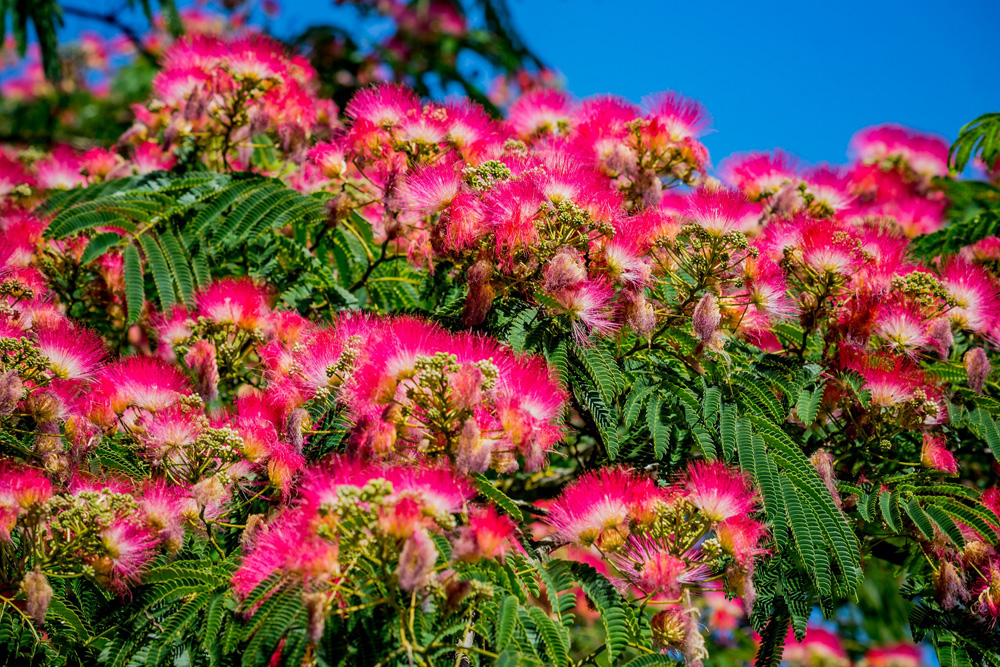Albizia sp.
Common Name:
Mimosa (Silk tree)

General Information:
Albizia are called silk trees because of the exotic pink flowers which have delicate silky filaments. Because of this, the tree makes an interesting, if problematic bonsai. The tree is fast growing, deciduous, but short lived (10 - 20 years) and the leaves are huge, making it suitable for only large size or unconventional bonsai. In addition, when the flowers get wet, they turn into a gooey mess. The tree is called “mimosa” in the south, but should not be confused with the similar trees, Acacia baileyana and dealbata, which are called “mimosa” in Texas.
The tree has a low branching, open, spreading habit and delicate, lacy, almost fern-like foliage. Fragrant, silky, pink puffy pompom blooms, two inches in diameter, appear in abundance from late April to early July creating a spectacular sight. But the tree produces numerous seed pods and harbors insect (webworm) and disease (vascular wilt) problems.
Family:
Leguminosae
Temperature:
It loves heat. Hardy in zones 6B - 9. Needs winter protection in the colder areas of its range to prevent die back.
Lighting:
Full sun.
Watering:
Moderate to slightly dry. Do not ever get the flowers wet! Feeding: No information available.
Pruning and wiring:
Suitable for only large size or non-traditional bonsai, due to the large compound leaves. In nature, they often grow with multiple trunks, and thus may suggest this style in bonsai. Prune in winter or early spring as needed. Wire branches when relatively young, as the branches become quite brittle when old.
Propagation:
By seed. Soaking and scarification may be necessary, as with most legumes.
Repotting:
Grows best in well-drained soil, although tolerant of poor and alkaline soil. Repot in spring.
Pests and diseases:
Problems include cottony cushion scale, mites, Mimosa webworm.
Diseases Mimosa (Fusarium) wilt is quite a problem and is fatal. It can spread to adjacent Mimosa trees by root grafts.
Some species suitable for bonsai:
Albizia julibrissin: silk tree, mimosa - this tree grows to 40 feet, and has greenish-gray striped bark. Its compound leaves are huge - 12-18 inches. Although it is known as a hot weather tree, it actually grows as far north as Long Island.
Albizia julibrissin ‘Rosea’: A smaller variety, which grows only to 20 ft. and has smaller flowers; it may therefore be more suitable for bonsai.
Bibliography:
USDA Fact Sheet ST-68
Compiled by members of the Internet Bonsai Club. Edited by Thomas L. Zane
